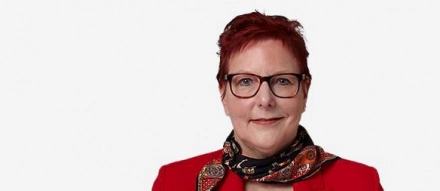
CBAM simplifications
The de minimis threshold – the problem with the previous solution
The current version of the CBAM Regulation provides for a de minimis threshold that is linked to the customs threshold. Accordingly, imports with an intrinsic value of up to 150 euros per consignment are exempt from CBAM. This threshold has proven unsuitable for the effectiveness of the CBAM mechanism. Experience to date in the first year of the transition phase has shown that, particularly in the iron, steel, aluminium, fertiliser and cement sectors, around 80% of importers are responsible for only 0.1% of embedded emissions. For companies that only occasionally import small quantities of CBAM goods in particular, the administrative burden of applying for CBAM authorisation, submitting reports and purchasing CBAM certificates is therefore disproportionately high.
The threshold is too low and the value of the goods is not a good indicator of the emissions they generate. Linking the threshold to the value of the respective consignment also incentivises circumvention by distributing goods over several consignments. For the same reason, the EU has already abolished the de minimis threshold of 22 euros for import VAT, and the EU Commission has also proposed abolishing the 150-euro threshold for customs duties. Last but not least, the large number of CBAM declarants is also a problem for the public administration.
New de minimis threshold from 2026
From 2026, there will therefore be a new de minimis threshold: Anyone who imports less than 50 tonnes of CO2 per year that is emitted from goods that fall under CBAM will be exempt from reporting. The EU Commission estimates that this will mean that 90% of importers will no longer have to report CBAM and purchase certificates, while 99% of emissions will still be recorded. The EU Commission is monitoring whether this regulation proves to be robust. It should also ensure that CBAM remains manageable if the reporting obligations are later extended to other sectors and downstream products.
In order to calculate how much CO2 a product carries, standard values were assigned to each customs tariff number, which are to be multiplied by the imported quantity of the product.
Practical implications of the new de minimis threshold for importers
Importers who assume that they will not exceed the new de minimis threshold must identify themselves as "Occasional CBAM importers" when making the customs declaration. There are no further obligations. However, they must keep an eye on whether the threshold will be exceeded in the current year and, if so, register as an authorised CBAM declarant. The mass of the imported goods must already be declared in the customs declaration, so that little additional effort is required to calculate the mass of the emissions. For most companies, this also provides sufficient certainty as to whether or not they are obliged to declare. For companies whose imports are close to the 50-tonne threshold, however, a certain amount of monitoring effort is required. According to estimates at the EU level, 1.3% of all importers are within +/- 15% of this threshold; in absolute figures, around 2,700 throughout the European Union.
Further proposals from the EU Commission for simplifications
The EU Commission is also proposing further simplifications that are primarily aimed at large importers. The most important ones are summarised here (not exhaustive):
- It should be permissible for declarants to delegate their obligations to third parties, e.g. consultants and/or environmental experts. The representative should fulfil certain requirements (e.g. have an EORI number) and adhere to certain processes that have yet to be determined.
- CBAM declarants should be free to choose between the EU default values and the actual emission values without having to check whether the actual emissions can be adequately determined or not.
- For some aluminium or steel products currently covered by CBAM, the majority of emissions occur at the level, while emissions from the processing or treatment of these precursors preliminary products are relatively low. It is therefore proposed that these manufacturing processes are not included in the calculation of emissions for these aluminium and steel products.
- No embedded emissions should be allocated to upstream products manufactured in the EU.
- The CBAM Regulation currently requires the verification of all embedded emissions, even if they are based on the default values specified by the EU Commission. This should be abolished because the verification of default values is redundant.
- The CBAM Regulation currently implies that indirect emissions from electricity are not subject to CBAM, but does not explicitly state this. Improvements should be made here.
- The reporting deadlines should be extended.
- Access to registration for accredited verifiers should be made possible.
- The financial burden on importers is currently unnecessarily high because importers are obliged to buy enough allowances to cover 80% of their emissions at the end of each quarter. This figure should be reduced to 50% and the basis for calculation should also be changed.
- Declarants should not be able to purchase certificates until February 2027, in order to cover emissions from imports in 2026. This is intended to give declarants more time to collect the necessary data.
- The CBAM rules stipulate that CO2 prices paid in a third country may be deducted in order to avoid double taxation. The hurdles for this deduction are currently too high and should be lowered.
- According to the current version of the CBAM Regulation, information on the sale, repurchase and cancellation of certificates must be submitted at the end of each working day. Cancellations should be excluded from this because they are automatically carried out by the European Commission.

